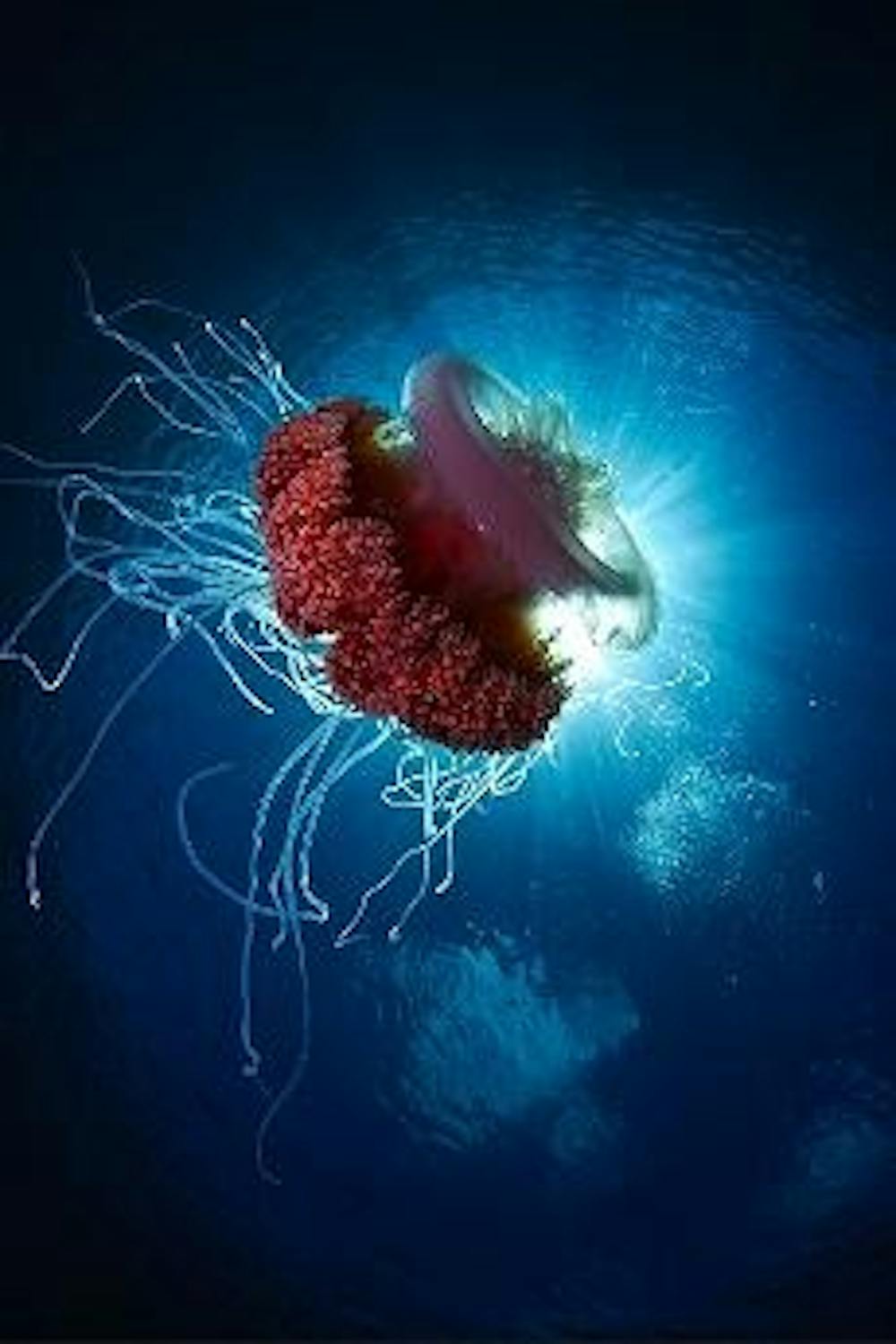A giant North American right whale is suspended from the ceiling on the first floor of the National Museum of Natural History. It drifts softly back and forth behind temporary walls covered in signs urging visitors to return in September for the opening of the brand new Ocean Hall.
Until the Ocean Hall opens to the public, the swaying whale isn't the only sea creature to which museum-goers can pay a visit. In anticipation of the new permanent exhibit, the museum opened "Nature's Best Photography: Ocean Views" upstairs. The exhibit showcases the work of photographers from across the world who have captured an equally diverse array of perspectives on the ocean
The approach taken by the photographers, as well as their subject matter, varies greatly. The exhibit is well curated, juxtaposing subjects and compositions creatively. Two takes on ice - by artists Jon Cornforth and John Sylvester - are placed together on one wall. Cornforth's photo, "Johns Hopkins Inlet" showcases transparent ice on the ground in Glacier Bay, Alaska a sunset. The colors are warm, sharp and clear. Sylvester's photo, "Iceberg in Fog," is hung below. Its colors are muted and obscured, and the ice appears opaque. The two photos give viewers a very different look at one element of the ocean.
In the same way these are hung together, Stephen Wong's "Manta Ray and Fusiliers" and Lorraine Thomas' "Reddish Egret and White Morph" have similar compositions and are hung one on top of the other. Wong's photo shows a ray underwater slicing across the work. Thomas' egret hangs above, cutting the air in the opposite direction with its wings. Their complementary compositions show the relationship between creatures above and below the ocean's surface.
The variation in subject is mirrored in the techniques and results the artists created. Many of the landscape-style photos, like "Boulders on the Beach" by Verena and Georg Popp, appear hyper-real with nearly every area in sharp focus. Others, though, like "Moon Jellyfish" by Wayne J. Dudley and "Baitfish and Boys" by Jeff Yanover, are abstracted, distorted and surreal in an entirely different way.
Perhaps the most intriguing photos are the ones that take on sea creatures as subjects of portraiture. Ken Wilk's "Tripletail Wrasse" is an intimate example. The fish's face in profile takes up nearly the entire composition. Douglas David Seifert's "Goliath Grouper and Cigar Minnows" takes on a similar perspective. These pictures seem to almost give insight to the personality of the fish.
The works shine in the exhibit. Each is accompanied by a quote from the artist and a description of the location to help viewers understand the significance of each individual work within the exhibition. "Ocean Views" was curated in honor of Windland Smith Rice, a renowned nature photographer. Smith Rice died in 2005, but according to the museum her passion for nature and people lives on through the exhibit. Each photographer's passion is reflected in their work and helps to create a truly moving exhibit.
"Nature's Best Photography: Ocean Views" is open through November at the National Museum of National History. More information can be found at the museum's Web site, www.mnh.si.edu.





